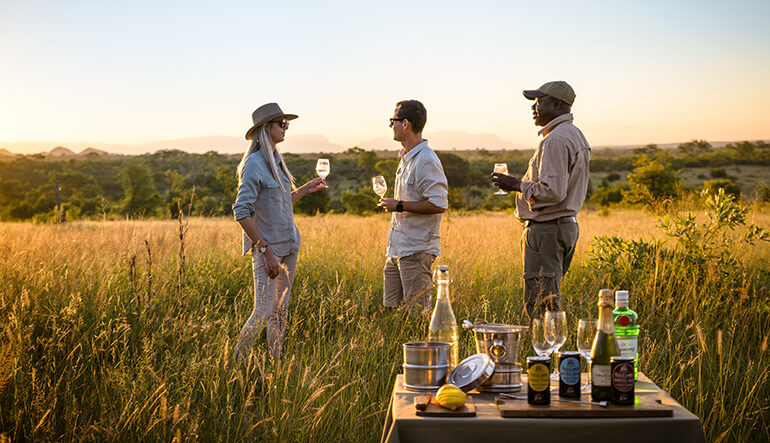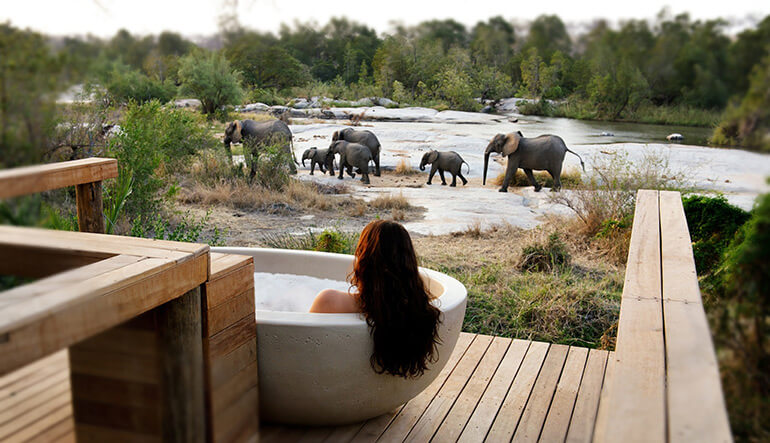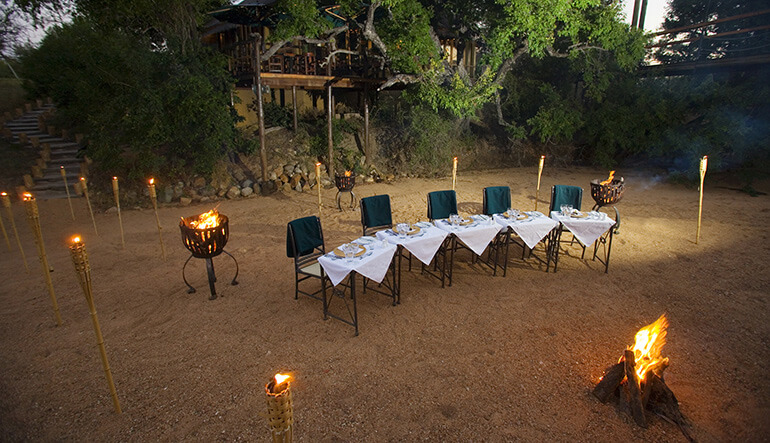Kruger National Park

One of South Africa’s most popular tourist destinations, the Kruger National Park is on many first-time South African safari itineraries. Home to 148 species of mammals, including the Big Five, and over 500 bird varieties, this national park offers plenty of opportunities to tick off your animal spotting list!
With easy access and excellent infrastructure, the Kruger National Park offers one of the best wildlife safari experiences in South Africa. The accommodation options are plentiful, ranging from campsites through to some of the most luxurious five-star bush lodges that you will ever witness. You can explore either on your own or take one of the many guided wildlife activities. There is so much to see and experience within the Kruger National Park.
Why Travel to the Kruger National Park
Spanning nearly two million hectares, this national park is big and boasts plenty to explore!
The Kruger National Park is one of the most accessible African national parks. It is open to both tour operators and DIY safari-goers – even day visitors are welcome! Flights are available from either Johannesburg or Cape Town into Skukuza, and charter flights are available for groups and high-end travellers.
Thanks to its reliable network of roads, the park is easy to navigate in your own vehicle. It is also one of the more affordable national parks when compared to some of Africa’s flagship reserves.
While you may encounter more crowds than in other African game reserves, the Kruger National Park remains an unspoilt beauty and the perfect destination for any nature lover.
Kruger National Park
Explore the Kruger National Park and contact us to help plan your Kruger safari.
Fun Facts
The Kruger National Park is South Africa’s largest and oldest national park. The area making up the park has been occupied by humans for many years, with evidence of people living within the reserve during the Earlier, Middle and Later Stone Age periods. Rock paintings in caves show evidence of the San people living in the area from about 20,000 years to 150 years ago.
The game reserve was first suggested by Jakob Louis van Wyk in 1895. The park was proclaimed a ‘no hunting’ zone by the Transvaal Republic government in 1898, then declared a national park in 1926. The first group of tourists visited the park in 1927.
The park is home to the Big Five. This group of notorious animals include the lion, leopard, African elephant, black rhino and buffalo. It is also home to the Little Five, which consists of the buffalo weaver, elephant shrew, leopard tortoise, ant lion and rhino beetle. You will also find the Birding Big Six, the ground hornbill, kori bustard, lappet-faced vulture, martial eagle, Pel’s fishing owl and saddle-billed stork, as well as the Big Five Trees; baobab, fever tree, knob thorn, marula and mopane tree.


About the Kruger National Park
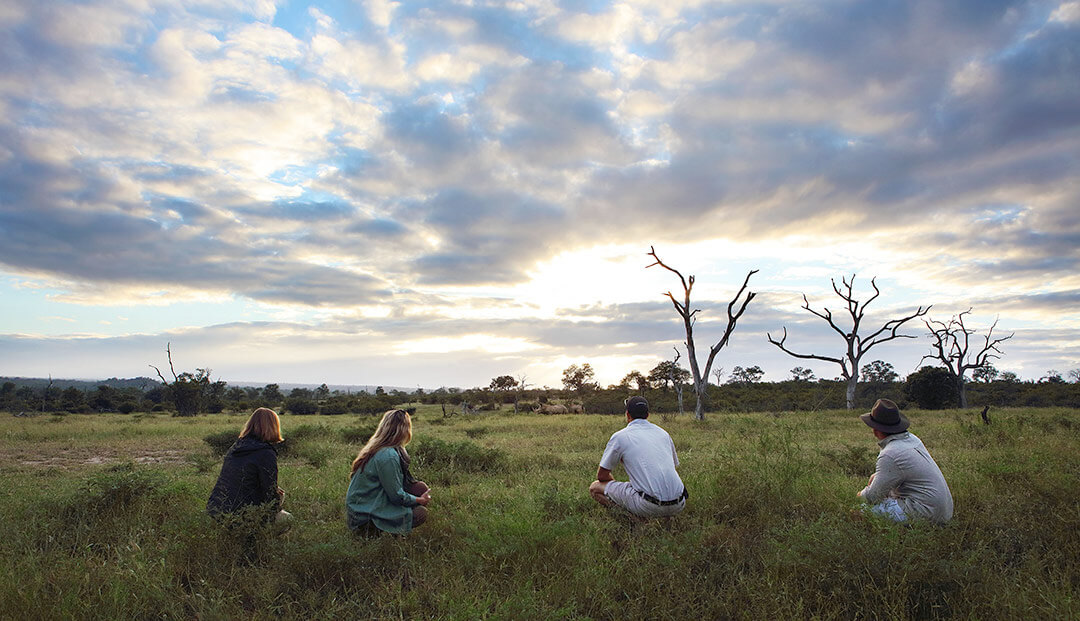
Owned by South African National Parks (SANParks), the Kruger National Park comprises of 20 000 000 hectares of wild African bush. The park is steeped in legend and history, making this iconic park a wonder to explore with its vast landscapes and masses of wildlife.
A safari in the Kruger National Park is an unforgettable, authentic experience in the bush. Travellers are guaranteed to see wildlife, birdlife and plant life, and too, learn about the ecology of Africa and witness conservation in action.
The southern region of the park is the most popular for tourists. It has the densest population of wildlife as well as the most popular rest camps including Skukuza, Satara, Lower Sabie, Letaba, Orpen and Pretoriuskop.
The park falls within a malaria zone, and visitors are advised to take anti-malaria tablets. The southern part of the park, however, is not as high risk as compared to the northern areas. Though, if travelling in the wet summer months, visitors should be vigilant and take precautions no matter which area of the park they are travelling to.
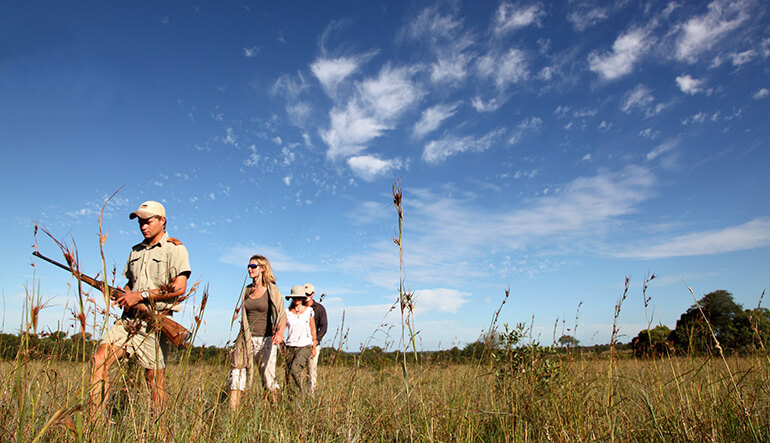
Kruger National Park Topography
The Kruger National Park is approximately 350 kilometres long and has an average width of 60 kilometres at its widest point. The entire eastern boundary of the reserve is located on the border of Mozambique, while its northern border is formed by the Limpopo River and the border of South Africa and Zimbabwe. The park extends across two South African provinces: Mpumalanga and Limpopo. While not officially recognised, the park can be split up into the southern region, the central region, the northern region and the far north. The southern region takes up one-fifth of the park and extends from the southernmost border of the park to as far north as the Sabie River. The central region is from the Sabie River through to the Olifants River. The northern region is from the Olifants River to just south of Punda Maria, while the far north is from Punda Maria up to the Limpopo River.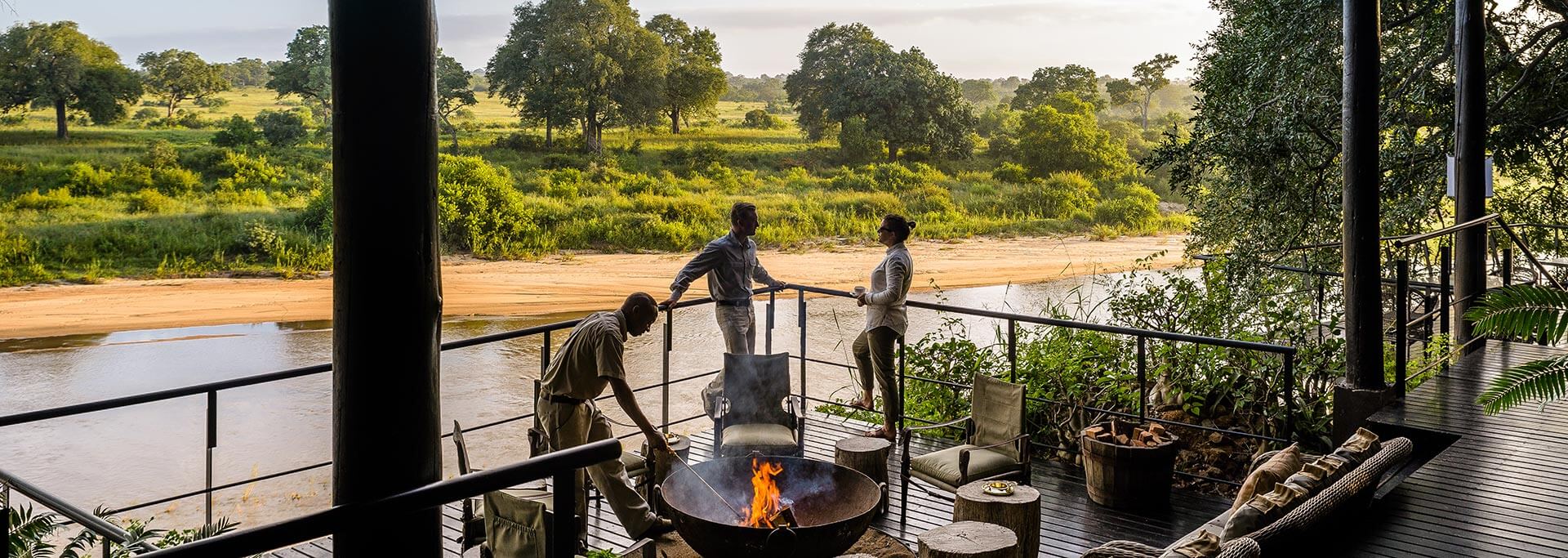 Several major rivers cut through the park, including the Crocodile, Sabie, Limpopo and Letaba Rivers. The landscape is mostly flat plains, occasionally broken up by the Lebombo mountain range which border Mozambique.
The Kruger National Park is home to four distinct bushveld regions, each with their own landscape and diverse range of species: thorn trees and red bush-willow veld, knob-thorn and marula veld, red bushwillow and mopane veld and shrub mopane veld.
Several major rivers cut through the park, including the Crocodile, Sabie, Limpopo and Letaba Rivers. The landscape is mostly flat plains, occasionally broken up by the Lebombo mountain range which border Mozambique.
The Kruger National Park is home to four distinct bushveld regions, each with their own landscape and diverse range of species: thorn trees and red bush-willow veld, knob-thorn and marula veld, red bushwillow and mopane veld and shrub mopane veld.Conservation in the Kruger National Park
As well as ensuring the conservation of wildlife and biodiversity of South Africa, SANParks also focuses on uplifting and empowering local communities, as well as encouraging various research programmes. The Kruger National Park takes conservation very seriously and works collaboratively with the African Wildlife Foundation (AWF) on various conservation community projects. Besides significant efforts in wildlife and biodiversity conservation, community development is also a vital priority for both parties. Each private game reserve put a great deal of effort into conservation. Each reserve runs several projects and initiatives to preserve both the wildlife population and natural land, as well as empowering the local communities.When to Travel to the Kruger National Park
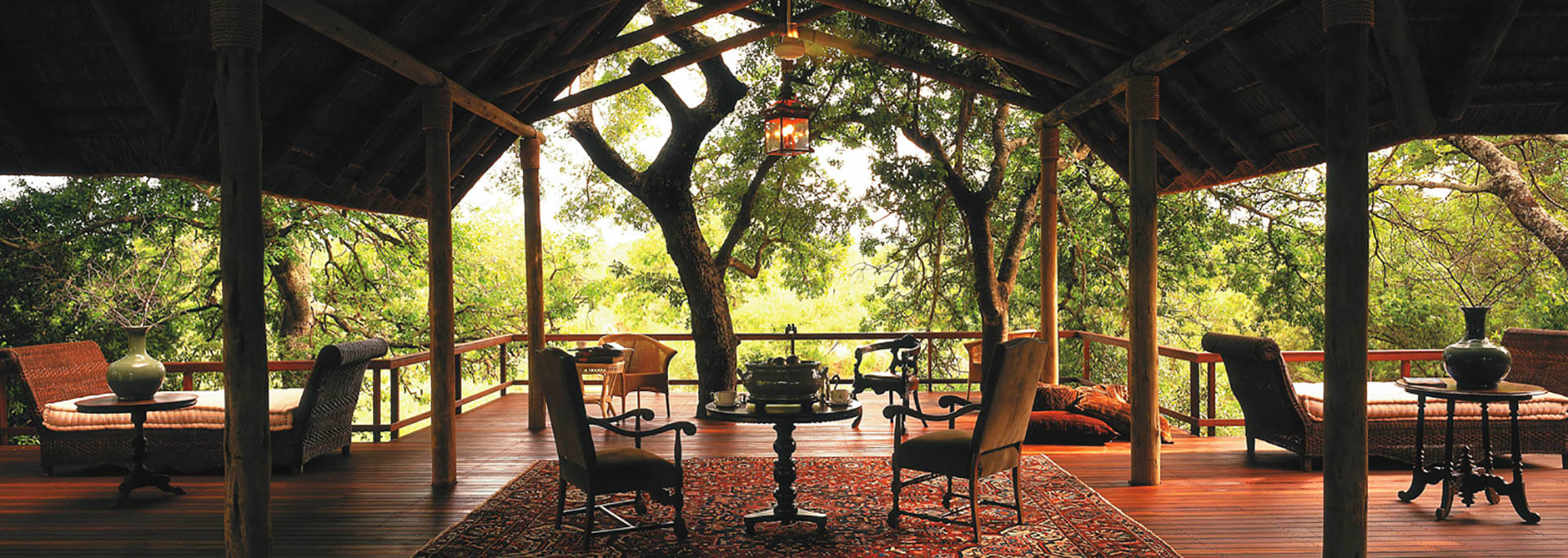
All Year
While you can travel to the Kruger National Park any time of year and still have a fantastic experience, the dry season (May to August) is best.
During this time is when the bush is sparse, and because of less water being available, the animals gravitate towards water holes, making them easier to spot. The weather this time of year is also relatively mild, rarely climbing above the mid-twenties during the day. It can, however, get quite chilly as soon as the sun sets. Evening and early morning game drives will need warm jackets and layers!
Thanks to the heavy rains in November and December the bush is lush during the summer months. While this does it make it a bit harder to spot animals, the bird population flourishes, and you’ll also get to see many animals with their young. There is nothing cuter than a baby elephant or lion cub! The weather is quite hot and humid in summer, reaching above 30°C during the day.
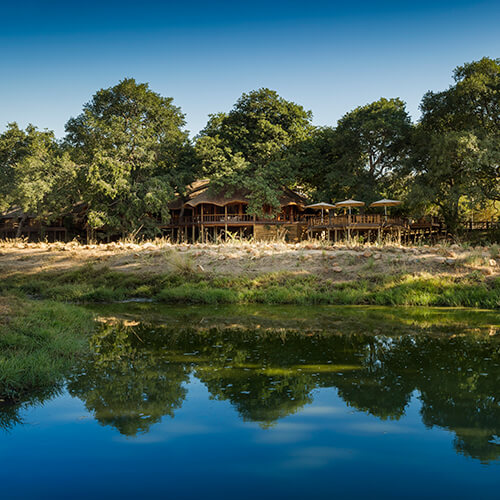
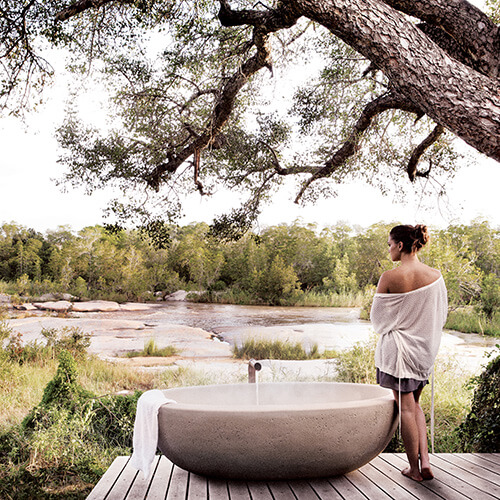
Accommodation in the Kruger National Park
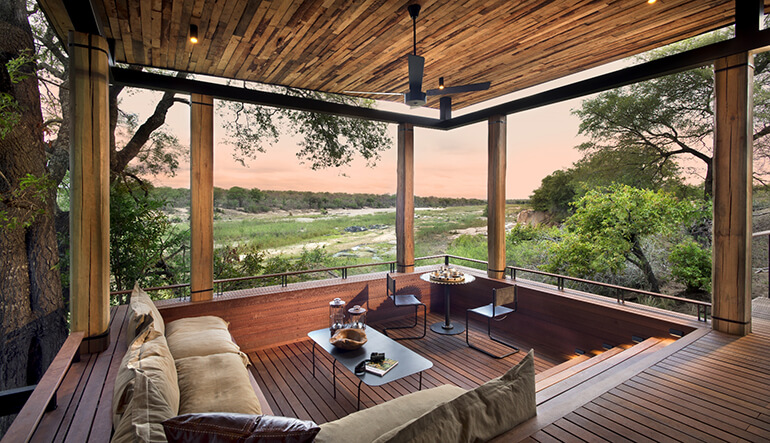
For those seeking an unforgettable safari in Africa, accommodation in the Kruger National Park ranges from luxury tented safari camps to bush lodges.
The Kruger One of the most popular areas of the Kruger National Park is the Sabi Sands region. Famed for its abundance of wildlife, both predators and plains game, the Sabi Sands attracts scores of travellers seeking unforgettable game viewings. The Sabi Sands was the old stomping ground of the Mapogo Lions, a notorious coalition of 6 male lions who went on a vicious killing spree in the region.
There are plenty of luxury accommodation options in the Sabi Sands, including Londolozi, Sabi Sabi, Singita, Ulusaba and more. Beyond the borders of the Sabi Sands, consider Bateleur Safari Camp in the Timbavati or Royale Malewane in Thornybush.
View all accommodation in the Kruger National Park.
Things to do in the Kruger National Park
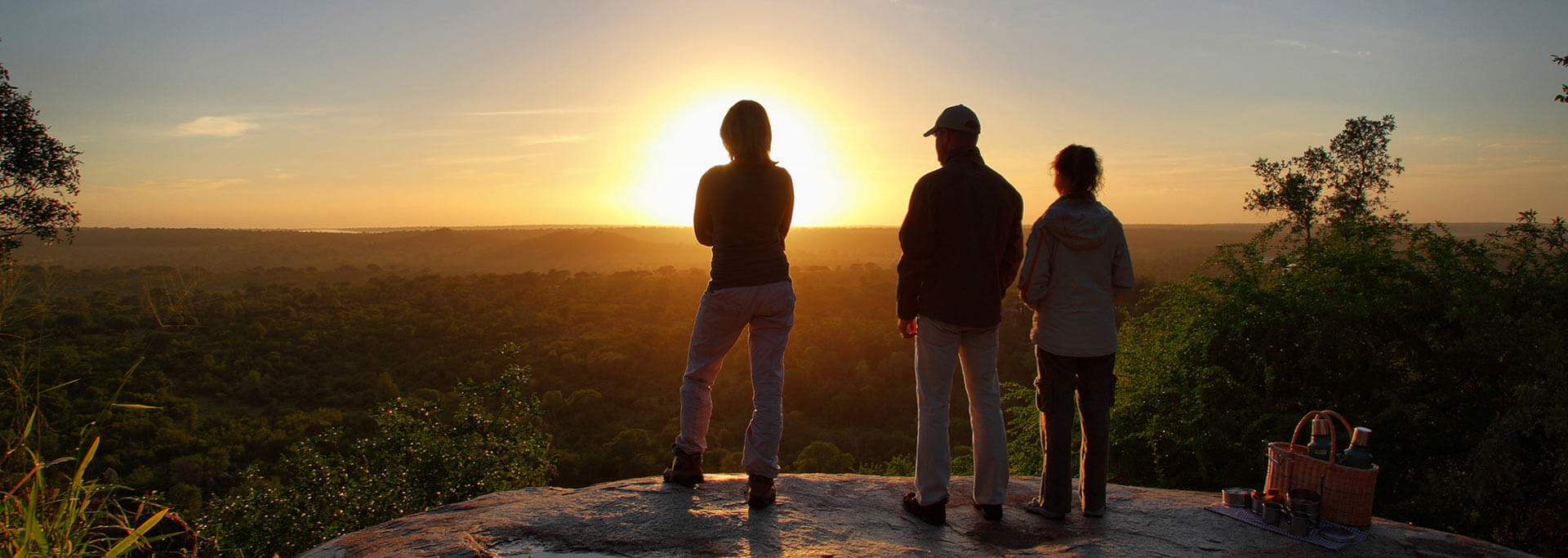
A trip to the Kruger National Park is incomplete without a game drive. All private lodges and safari camps offer game drives. These are predominantly in groups, with a vehicle shared with other guests; however, private game drives can easily be arranged.

The most popular times for game drives are around sunrise and sunset when the animals are most active. It’s essential to experience both. There is nothing better than watching the sunrise over the bush, with a warm mug of coffee in hand (and of course a rusk to dunk). A close second is watching the sunset with a sundowner in hand – you can’t beat a typical African sunset in the bush! A night-time safari will allow you to see nocturnal animals, like genets, civets and owls.

As well as game drives, most lodges will offer walking safaris. This is an amazing way to discover the bush and to see smaller details like plants and insects that are hard to spot during a drive. Walking safaris also give guests the chance to track game on foot!
Travel to the Kruger National Park

Explore the Kruger National Park and contact us to help plan your Kruger safari.
Need help? Talk to an expert!
Contact African Travel Canvas and we’ll help you book your dream vacation to Africa!



